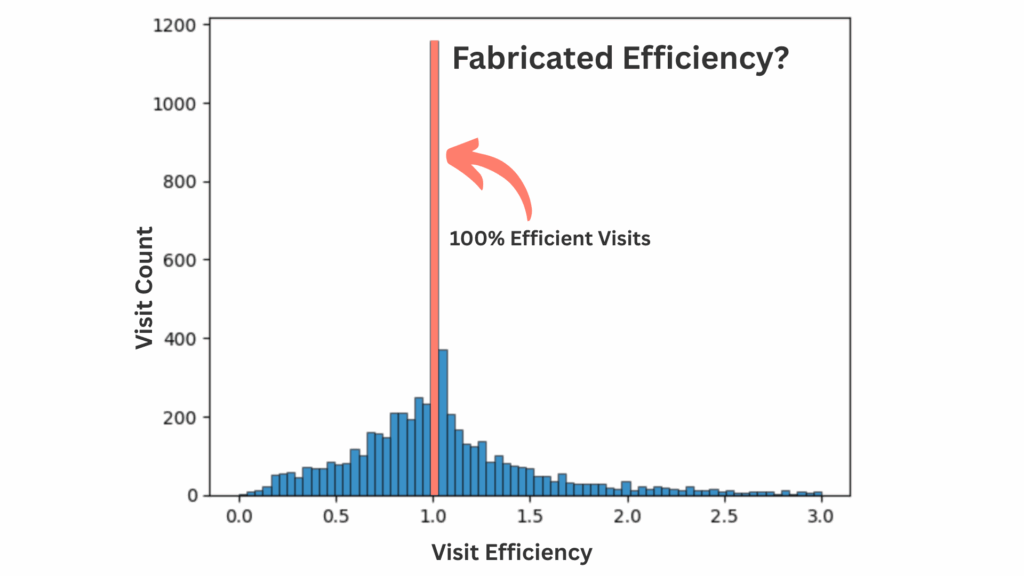Greenscape’s Hidden Labor Leak: What Perfect-Looking Reports Didn’t Show

“Our purpose goes far beyond merging businesses or generating economic returns for investors. This is about creating an impactful, resilient, and innovative organization that empowers our team members, exceeds client expectations, and strengthens the communities we serve.”
– Daniel Currin
That long-term vision—to scale smarter, not just faster—demands more than a larger footprint. It requires tools, systems, and a culture that support clarity, accountability, and consistent execution in the field. That’s why Greenscape’s leadership assumed their 2018 switch to Aspire would give them the visibility they needed to stay competitive.
The Hidden Truth
“When two of the biggest, PE-backed firms in our market switched to Aspire, I thought, ‘If they trust it, I can neutralize their edge.’ So we bit the bullet and made the switch.”
For a few years, things looked great on paper. Reports showed crews hitting targets. Labor costs seemed under control. Everyone believed the upgrade had worked.
But in 2023, while laying the groundwork for Green Leaf Group’s operational foundation, Greenscape partnered with BomData to dig deeper into labor efficiency. That’s when the real story emerged.
BomData co-founder Matt Lavin ran a standard-deviation analysis on Greenscape’s scheduled versus actual ticket hours. The results were startling:
90% of tickets sat exactly at 100% of estimate—a statistical impossibility in real-world operations.
The remaining 10% were scattered anomalies—some wildly over, some implausibly efficient. The culprit? Supervisors were redistributing hours across tickets simply to make payroll work, not to reflect actual job performance.
 Daniel recalls:
Daniel recalls:
“Matt showed me the graph and I thought, ‘Oh, wow—that’s not right.’ I’d paid for Aspire and CrewMobile and thought we were using it fully. Instead, we were focused exclusively on making payroll work each week without thinking about job performance.”
On the surface, Aspire reports looked great—crews on target, labor costs in line. But beneath that façade, key insights were being missed—not because Aspire wasn’t working, but because the data wasn’t being fully leveraged. BomData made those blind spots visible and helped Greenscape get more out of the tools they already had.
Why It Matters
If you looked only at Aspire, everything seemed on track. But underneath, our teams were under-utilizing Aspire, hours were being manipulated—compromising renewals, margins, training decisions, and ultimately, trust.
Without accurate job-level data, you can’t:
- Price renewals correctly. You don’t know if estimates are too low (hurting profit) or too high (risking competitiveness).
- Spot training needs. You can’t tell which crews are genuinely efficient or struggling.
- Build team confidence. When timesheet data is off, budget targets feel arbitrary and frustrating.
“We thought buying the same software as the big guys would level the playing field,” Daniel says. “Instead, they knew how to use it better than we did—and walked away with a major edge over us, and we didn’t even know.”
BomData’s Reveal
BomData’s first win wasn’t optimization—it was exposure.
By flagging tickets with suspicious entries and displaying a clear distribution curve, BomData gave Greenscape a dashboard they could trust: color-coded job scores and visuals that made it easy to spot outliers—something that was nearly invisible in Aspire alone.
This shift didn’t just improve reporting. It sparked a culture change—one deeply aligned with Greenscape’s CLeATS values: Communication, Learning, Accountability, Teamwork, and Sustainability.
With BomData:
- Communication improved. Field leaders and office staff shared a common language.
- Learning accelerated. Data uncovered teachable moments, not just errors.
- Teamwork deepened. Crews understood that accuracy wasn’t about compliance—it shaped bonuses, renewals, and future job scopes.
Early Wins
- Improved Crew Efficiency. This shift helped drive an 8% improvement in crew efficiency year-over-year—a direct boost to margins and a key step toward Greenscape’s 12% profitability goal.
- Admin time reclaimed. Managers stopped massaging data and started coaching.
- Credible metrics. Efficiency scores now reflected the actual field experience.
“We didn’t need more dashboards—we needed the right ones. BomData gave us focus and helped us get more out of Aspire.”
What’s Next?
In Part 2, we’ll share how Greenscape moved from awareness to action—using real-time insights to coach crews, strengthen manager accountability, and build the discipline needed to achieve true 100% efficiency.
